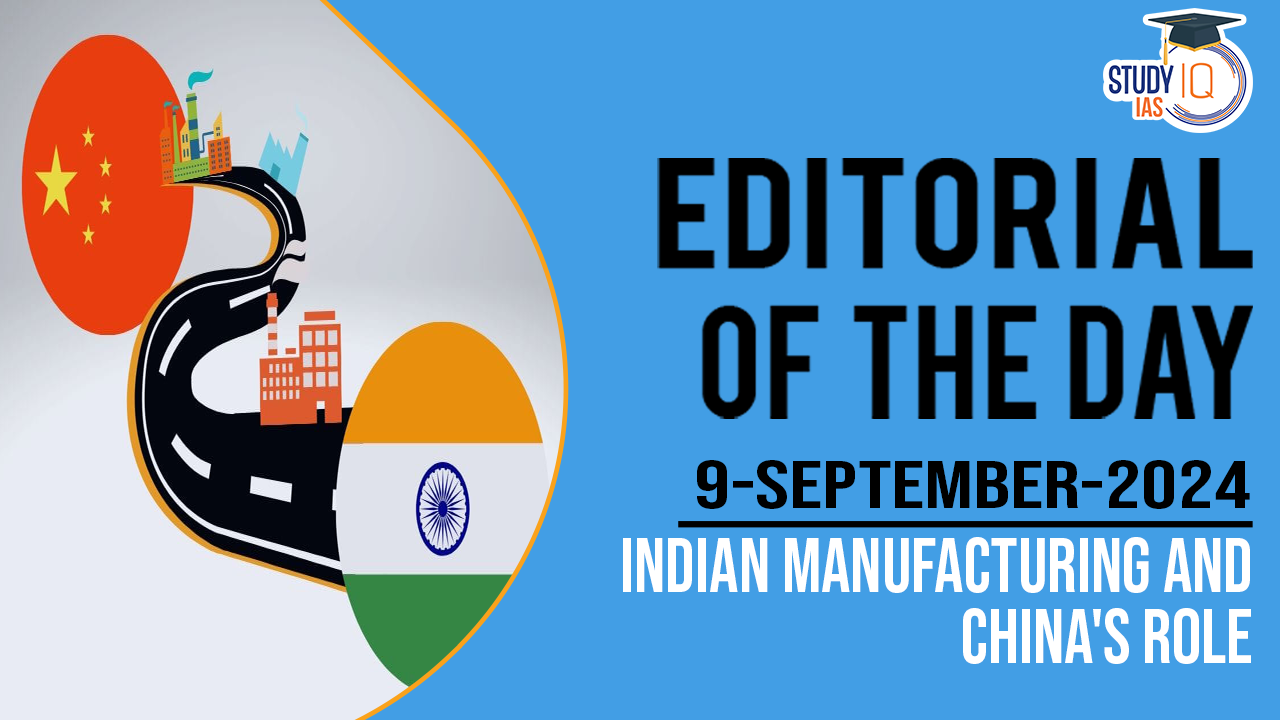Table of Contents
Context: The Indian government has taken various initiatives to transform India into a global manufacturing hub.
What are the recent initiatives to transform India into a Global Manufacturing Hub?
- Initiatives such as the ‘Make in India’ project, launched in 2014, and the Production Linked Incentive (PLI) scheme aim to attract both domestic and foreign capital.
- The 2024-25 Union Budget has allocated ₹6,125 crore for large-scale electronics manufacturing under the PLI scheme, up from ₹4,499 crore in the previous budget.
- The research and development sector, especially in electronics and IT, also saw increased funding of ₹1,148 crore, compared to ₹600 crore in 2023-24.
Chinese Presence in the ‘Make in India’ Initiative
- Chinese smartphone companies, operating in India for a decade, have been significant beneficiaries of the ‘Make in India’ project, dominating the market.
- As of 2023, four out of the top five smartphone brands in India were Chinese, holding over 50% of the market.
- India’s large base of Android users (70% market share) and the appeal of Chinese applications have driven this success.
Impact of Bilateral Tensions and Indianization Efforts
- Relations between Indian and Chinese companies faced challenges after the 2020 Galwan Valley incident, resulting in a push for “vocal for local” products.
- Increased scrutiny of Chinese companies for tax-related issues and calls for Indianizing their operations led to measures such as:
- Involving Indian equity partners.
- Appointing Indian executives to leadership roles.
- Partnering with Indian contract manufacturers.
- Focusing on exporting products made in India.
- This mirrors China’s strategy of nurturing indigenous manufacturers.
Indianization in Action
- Chinese companies have started to comply with Indian government directives, hiring local distributors, segregating brand operations, and teaming up with domestic manufacturers to qualify for PLI benefits.
- Their adaptability reflects a long-term commitment to the Indian market, despite challenges.
Challenges and Ground Realities
India’s push to develop a full-fledged smartphone manufacturing ecosystem faces several obstacles:
- Lack of developed ancillary industries.
- Inadequate technological clusters for knowledge-sharing.
- Deficiencies in infrastructure, including power, water supply, and workforce conditions.
- China’s reluctance to share technology without clear terms on equity participation also hampers progress.
- The Indian government, recognizing the need for skilled Chinese technicians, has recently eased visa norms.
- The 2024 Economic Survey suggested to endorse Foreign Direct Investment (FDI) from China rather than focusing solely on the China Plus One strategy.
- This indicates that balancing home-grown manufacturing and continued Chinese involvement is essential for India’s manufacturing ambitions.


 Places in News for UPSC 2025 for Prelims...
Places in News for UPSC 2025 for Prelims...
 New Phase of Operation Chakra to Combat ...
New Phase of Operation Chakra to Combat ...
 Soyuz Aircraft: History, Design and Sign...
Soyuz Aircraft: History, Design and Sign...





















